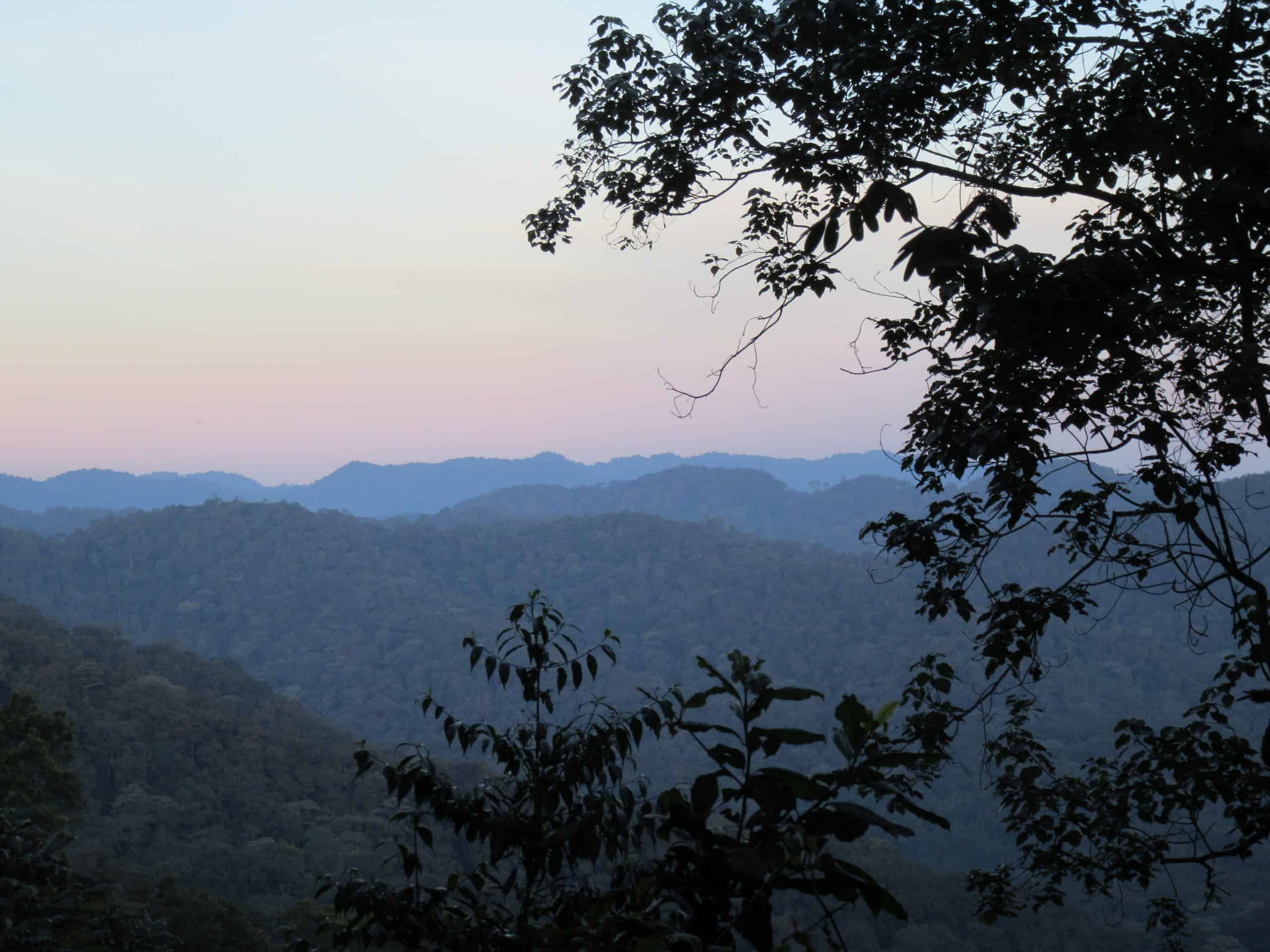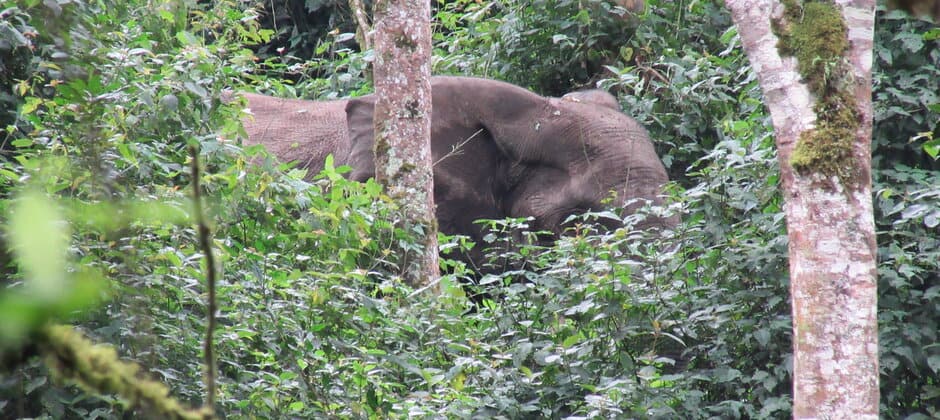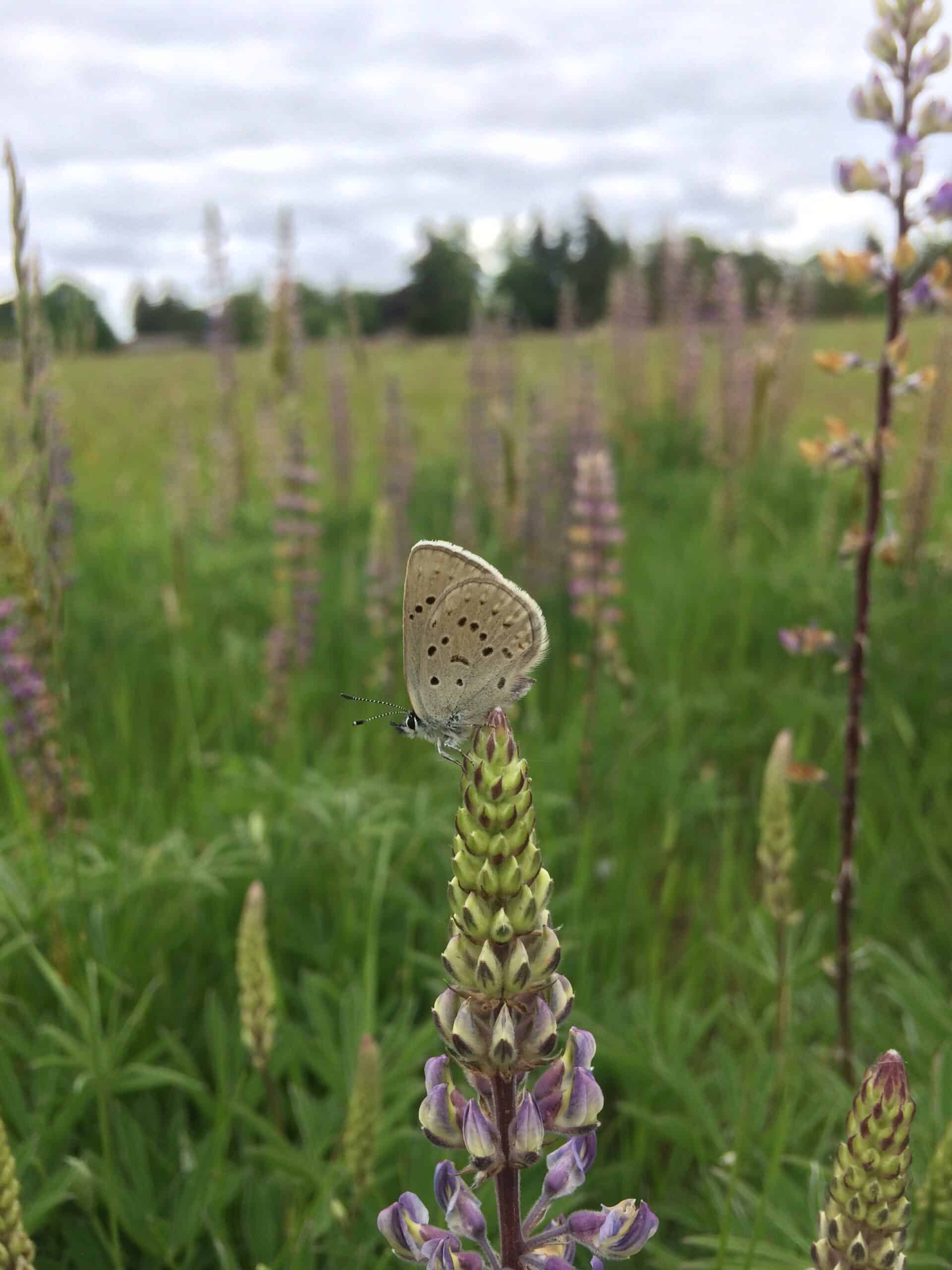Share this article
TWS2021: Tracking hybrid elephants in Uganda
There aren’t many good places in the world to catch a machete to the leg, but hours of hiking into the midst of a Ugandan national park with “impenetrable” as part of its official name has to be among the worst.
Claire Goodfellow, a PhD student studying ecology at the University of Oregon, was tracking elephants in the forest in Bwindi Impenetrable National Park as part of the first survey in decades on the animals’ populations and numbers. Her work wasn’t seemingly glamorous—waking up early to follow elephant trails looking for dung piles—but it was important. The scat would later be analyzed for DNA to learn more about the elephants’ genetic makeup and hybridization between species.
She was climbing a steep hill one day, when the park ranger ahead of her lost his grip on his machete. The blade hurdled back toward Goodfellow, striking her in the leg. But one of the more irritating parts of her work—safari ants (Dorylus spp.)—actually helped her out for once. Goodfellow had donned multiple layers of thick socks to protect herself from the biting ants. She’d tucked her pant legs into the socks to limit the amount of exposed skin, and the extra padding saved her from any serious injury.
“There was a blood bruise in the line of a machete,” Goodfellow recalled.

Researcher Claire Goodfellow conducts lab analysis of elephant dung. Credit: Enrique Gomez
The Bwindi Impenetrable National Park in Uganda is one of the only places in Africa where forest elephants (Loxodonta cyclotis) are known to regularly hybridize with savanna elephants (L. africana). While they belong to the same genus, the two species likely diverged from each other long ago—about the same epoch when Asian elephants (Elephas maximus) diverged from woolly mammoths (Mammuthus primigenius), Goodfellow said.
The ecologist was interested in learning why the animals hybridized in Bwindi and a few other areas of Uganda, but nowhere else on the continent. She followed elephants in search of DNA samples in December 2018 and again from July to September in 2019. She described her ongoing research on a poster presented at The Wildlife Society’s virtual 2021 Annual Conference.

Goodfellow and her colleagues tracked elephants through the jungle in search of droppings. Credit: Claire Goodfellow
In her research, Goodfellow also included data on elephants from the Great Gorilla Census in 2018 conducted by the Greater Virunga Transboundary Collaboration, a group including multiple government agencies, nongovernmental organizations and local communities.
Elephants hadn’t been surveyed in Bwindi since 1992-1993 following a period where the area experienced intense poaching during the regime of Ugandan dictator Idi Amin. Back then, the survey only found one group of elephants, 22 strong with only one male in the entire national park.
“When there’s war and when there’s socioeconomic upheaval, there’s poaching,” Goodfellow said.
Since then, local estimates of the population varied wildly depending on who she spoke to, putting the numbers in Bwindi at anywhere between 40 and 400 individuals.
She hiked through the bush nearly every day with rangers, penetrating through the Impenetrable National Park by hacking away vegetation on steep mountain sides. “It was very strenuous work,” Goodfellow said.
Despite tracking the elephants closely, she only actually saw live elephants less than 10 times—they are huge but still rather cryptic. “You can be right next to a forest elephant and not know they are there,” she said.

The population of elephants in Bwindi has increased. Credit: Claire Goodfellow
She and her colleagues are still analyzing DNA they collected from elephant dung, but so far they have determined that the elephants in Bwindi are mostly forest elephants. There are some hybrids, but they haven’t yet found any pure savanna elephants. This contrasts with other work conducted in Kibale National Park in western Uganda, which has hybrids and pure savannah elephants but no forest elephants.
While they haven’t yet finished a population size analysis, Goodfellow said the elephant numbers in Bwindi has certainly grown since the early 1990s. She’s curious to see whether the results show that most animals today descend from the single male known to live in the park nearly three decades ago. The park is isolated from other elephant habitats, so unless elephants immigrated from far away or there were other males not found in the 1990s survey, it’s possible that the male sired most of the current population.
Determining the proportion of their hybridization can help conservationists determine how best to protect the Bwindi elephants, Goodfellow said. Forest elephants eat more fruit and travel greater distances while foraging, for example, than savanna elephants, which move around less.
“These are very different animals with very different management needs,” Goodfellow said.
Header Image:
Forest elephants are difficult to see in the thick forest of Bwindi Impenetrable National Park.
Credit: Claire Goodfellow








